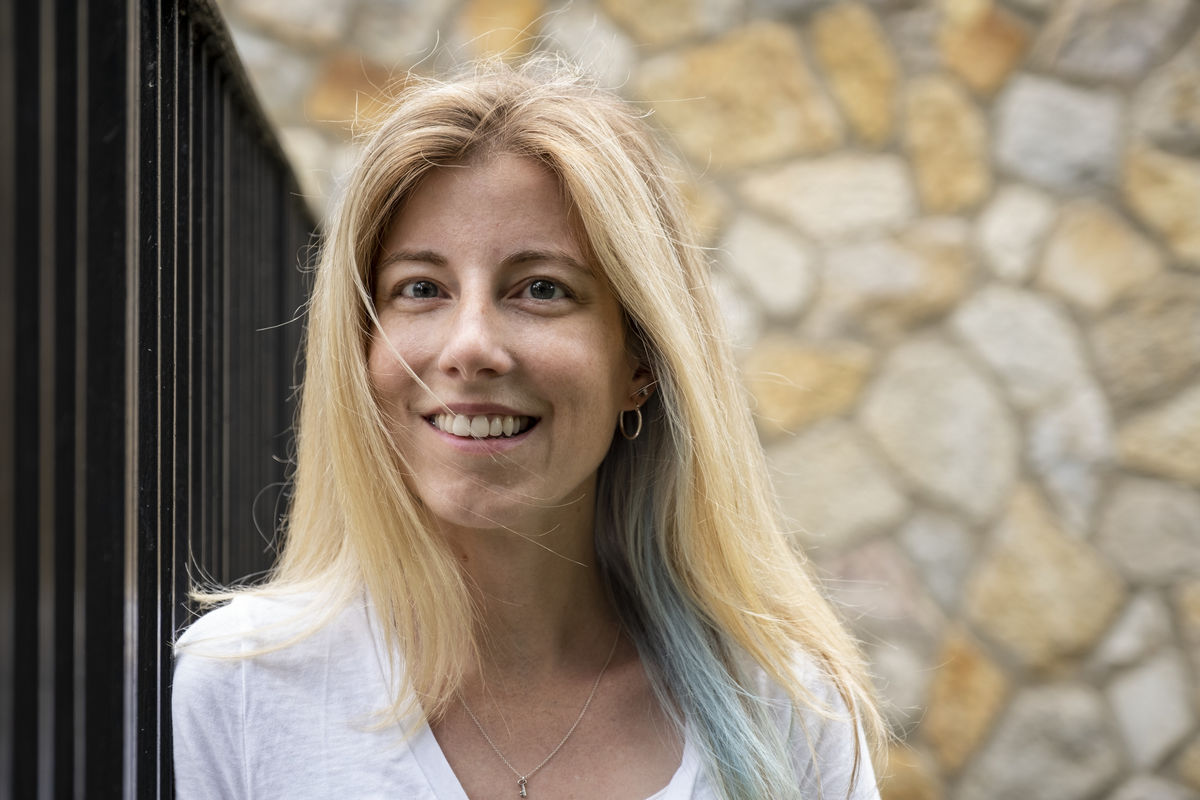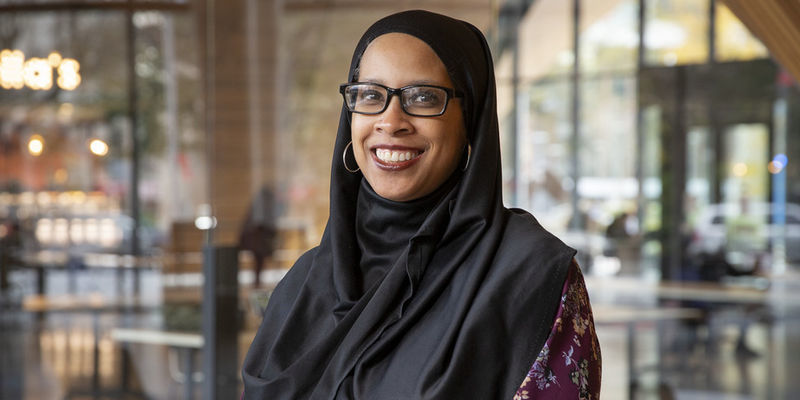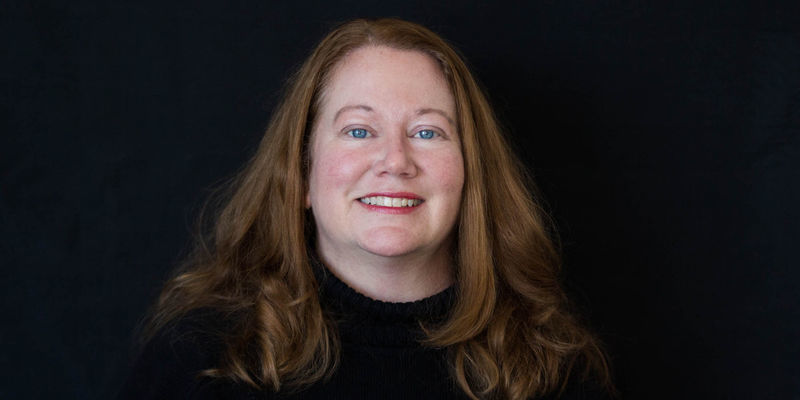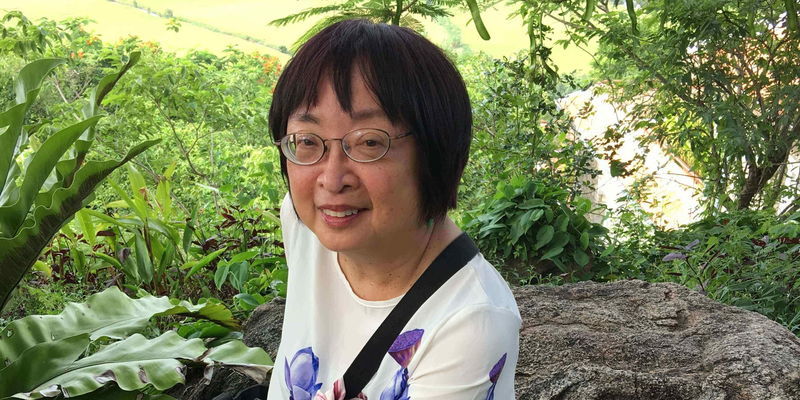Why aromantic and asexual people belong in LGBTQIA+ community
Jennifer Pollitt, an assistant professor and assistant director of gender, sexuality and women’s studies, talks about asexuality and aromanticism and provides insight into these lesser known LGBTQIA+ identities and why they’re often overlooked.

Jennifer Pollitt is an assistant professor and assistant director of the Gender, Sexuality and Women’s Studies Program. In addition to teaching, she lectures and facilitates workshops for both academic and professional audiences, including co-founding Empathy A Work, LLC, and organizing the Men & #MeToo Conference in Philadelphia. She has developed comprehensive sexuality curricula used by the American Medical Association and other universities. She also belongs to the nation’s oldest and largest legal advocacy group that fights for the civil rights of LGBTQIA+ individuals and those who live with HIV. As a member of the LGBTQIA+ community, she is a strong ally of asexuals and aromantics and we asked her to share her knowledge of these lesser-known identities that fall under the queer umbrella.
We spoke with Pollitt about what asexuals and aromantics can teach others about connection, why they belong in the LGBTQIA+ community, and why they are so often left behind in LGBTQIA+ discourse.
Temple Now: Two of the more recently recognized identities within the LGBTQIA+ acronym are asexual and aromantic. Can you describe these identities?
Jennifer Pollitt: A person who identifies as aromantic is someone who may experience sexual attraction, but doesn’t experience romantic attraction. They are often uninterested in having romantic relationships, but may be potentially interested in having sexual relationships.
A person who is asexual, on the other hand, may experience romantic attraction, but does not typically experience sexual attraction. They may be interested in romantic relationships, but are often uninterested in sexual relationships.
There are people who identify as both aromantic and asexual, and both of these identities are valid orientations that belong within the big, beautiful rainbow umbrella of LGBTQIA+.
TN: What is the history of these identities?
JP: We know aromantics and asexuals have existed for as long as humans have. However, it’s only through the terminology recently going mainstream that we can actually put words to these feelings, identities and experiences. As language evolves, so does visibility and understanding, though we haven’t reached enough understanding yet. Social media platform Tumblr was one of the main online communities helping to create language for asexuality and aromanticism, while other online spaces were involved in helping these identities flourish and thrive.
Because of Freud’s influence, many of us grew up learning that our sex drive is the primary motivator of human behavior, but that isn’t the case. As more people identify themselves with these terms, they contribute to the body of work that is expanding, explaining and building bridges toward understanding asexuality.
TN: What about asexuals who pursue sexual relationships, and aromantics who pursue romantic relationships?
JP: There is a huge difference between orientation, behavior and identity. The sexual or romantic behavior you engage in does not necessarily correlate with the identity that you’re using to describe your experiences or orientation. If we just look at someone’s actions, that doesn’t tell the whole story in the same way that identity alone doesn’t tell the whole story. The same goes for sexual orientation, because you need to consider all three factors if you’re genuinely interested in understanding that person.
Whatever identity or label someone chooses for themselves is theirs to own. When someone tells you what they are, it is your job to believe them. There are asexuals who are interested in sex and aromantics who are interested in romance, and to what degree and what level is for them to decide. They still get to claim their label because that is theirs.

“By using these identifiers, LGBTQIA+ individuals feel less alone: they find out they aren’t the only ones who feel this way and they reach much more personal fulfillment,” said Pollitt. (Photo by Joseph V. Labolito)
TN: What kind of love and relationships do people with these identities experience?
JP: There is so much that people can learn from asexual and aromantic people, because these individuals are teaching us entirely new ways of creating relationships that are not founded on systems of oppression. While so many of us follow scripts and force ourselves into boxes that we did not create and are not working, asexuals and aromantics have done so much internal interrogation and investigation that they’ve made something different. They have created space for relationships that help them flourish and thrive while being nurturing, nourishing and satisfying.
TN: Within the LGBTQIA+ community, aromantics and asexuals are being met with some resistance. Why is that?
JP: If we take a look at the arc of the LGBTQIA+ civil rights movement, contention has arisen regarding marriage equality being the major focal point of the movement: namely, why did it have to come first? Not every LGBTQIA+ person wants to marry. Many felt that workplace discrimination policies designed to protect LGBTQIA+ individuals should have come first, because jobs provide financial security. Why are we pushing marriage to the forefront of this movement as if this will determine whether or not we’ve “made it.”
Then look at who was thrust in the spotlight: dyadic, cisgender, typically white, middle to upper-middle class lesbian and gay people. And that is not representative of even the majority of the LGBTQIA+ community, yet that was the political and legal strategy used in order to gain access to necessary power resources. By creating a platform that made us resemble the existing power structures, and leaving out entire groups of people, we were able to access some of that much-needed power.
That mindset replicates itself within the community so that when a new identity emerges, or when people try to explain themselves, there is resistance and pushback from within the community with the mindset that “if we let these kinds of people in, then that will dilute the access to power and resources we have.” And it forces the community to maintain adjacency to white supremacy, patriarchy, capitalism, ableism and classism, all while leaving behind entire groups of people.
TN: What issues have asexual and aromantic people experienced, and are they comparable to the issues experienced by other members of the LGBTQIA+ community?
JP: Absolutely. The biggest comparisons are the lack of visibility and exclusion from communities on the basis that they’re weird, different, othered or “don’t belong in this space.” Every queer person has experienced this narrative and as more join under the umbrella, the newbie will experience the same challenges, discrimination and misunderstandings as those who came before.
TN: Do you think there will be more identities joining the LGBTQIA+ acronym?
JP: Yes. The more words we have to describe ourselves, the better we are understood. Those words can change depending on the phase of life that somebody is in, their experiences, their history, etc. In this field more than any other field at this time, the language of gender and sexuality is exponentially changing.
However, the goal isn’t for everyone to know every single LGBTQ+ term perfectly. The goal is to be curious, to learn more about others and to own the mistakes you make. Expanding the language of gender and sexuality builds more connections.
—Rayna Lewis


